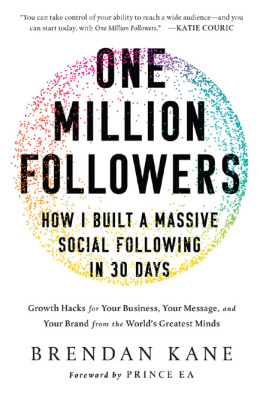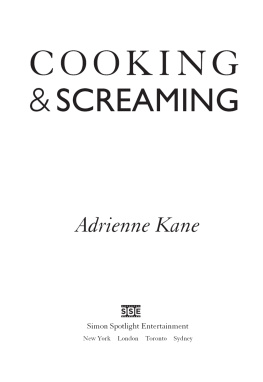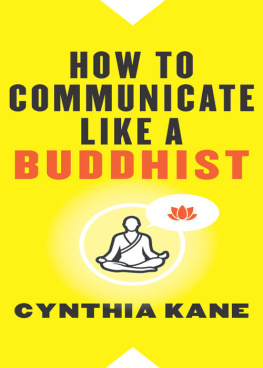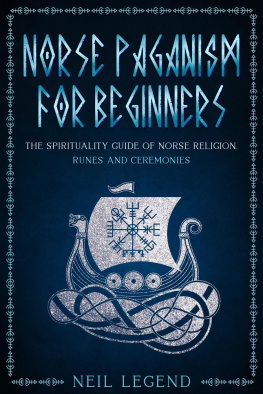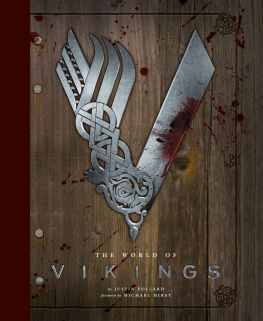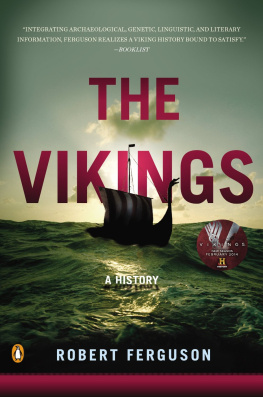The Vikings
AStory of a People
by Njord Kane
2014 by Njord Kane. All rightsreserved.
No part of this book may bereproduced in any written, electronic, recording, or photocopyingform without written permission of the author, Njord Kane, or thepublisher, Spangenhelm Publishing. You must not circulate this bookin any format.
Published on: February 11, 2014 bySpangenhelm Publishing
Interior Design and Cover by: NjordKane
ASIN: (Kindle Edition)
1. Vikings 2. Norse 3. History
First Edition.
10 9 8 7 6 5 4 3 2 1
Preface
This book is divided into two parts. The firstpart tells the Norse story chronologically from an anthropologistspoint of view. Starting from the Stone Age Peoples that migrated ashunter-gathers following herds of megafauna, such as Mammoths. Intothe gradual progression of settling and forming into a complexsociety.
The second part of this book highlights specificsabout ancient Norse culture, technology, beliefs, and practices.
The Norse were a major indigenous people ofScandinavia and Northern Europe. We see the words Vikings and Norseused interchangeably without discrimination. So which is correctwhen referring to these people, do we call them Vikings or Norse?
The term Viking is not actually whatthe Norse people called themselves, but is was something they did. The word Viking comes from the Old Norse word vkingr,a term which meant to go raiding and it wasn't always by boat. Theword Viking was only later made to mean the Norse people whomconducted these raids, along with other stereotypes commonlyassociated with Vikings. All false stereotypes, suchas the horned or winged helmet for example.
Calling them Vikings is incorrect,however it is of such common use today that when we call themVikings, everyone knows we are talking about the Norse. But Vikingwas something they did (raid) and they were actually called theNorse. A statement of fact is: all Vikings were Norse, but not allNorse were Vikings. In fact, most Norse were farmers justlike everyone else on the planet.
The purpose of this book is to provide a conciseand up to date historical chronicle about the Norse people. With somany recent discoveries by archeologists studying the Norse manythings that we'd previously known about the Norse has changed. Thismakes the Nordic story as previously taught out of date and needingto be retold. This book tells the Norse story current to Today'sdiscoveries, presented in short chapters to maintain the reader'senthusiasm through each epoch of Nordic history.
We start our story about the Norse from the firstexistence as an identifiable and distinct people whom had migratedinto Scandinavia and Northern Europe many thousands of years ago. Wewill bring you through their progression from hunter-gathers into theagricultural settlements that grew into societies. A journey throughthe rise and expansion of Nordic culture. Highlighting newdiscoveries in Norse knowledge and technologies, that were previouslya mystery to scientists.
This book is not the single work of the author,but the combined works of hundreds of years by thousands ofresearchers that have spent lifetimes trying to unravel the story andmystery of the Norse. There has been so many recent discoveries bymodern researchers, the Nordic story has almost been rewritten fromwhat we thought we used to know about their obscure history that wasalmost lost in time and mythology.
Part1
TheBeginnings of a People
Chapter 1 - Who were the Vikings?
The Vikings were an ancient people of NorthernEurope and Scandinavia known as the Norse, also known as Northmen orNorsemen. The Norse people as a whole, spoke as their nativelanguage one the dialects of Norse, a Northern Germanic /Scandinavian language in wide use before the Christianization ofNorthern Europe, Russia, and Scandinavia.
The Norse people come from Northern Europe,particularly of the regions known today as: Scandinavia (Norway,Sweden, and Finland), Germany, Denmark, Poland, Netherlands, theUnited Kingdom (England, Scotland, Ireland, and the surroundingislands), Iceland, Russia, Latvia, Lithuania, and Estonia.
The term Viking is not actually whatthe Norse people called themselves, but is was something they did. The word Viking comes from the Old Norse word vkingr,a term which meant to go raiding for loot and not always by boat. The word Viking was only later misused to mean all of the Norsepeople, instead of just those whom conducted these raids, along withother stereotypes commonly associated with the term, Vikings. There are many false stereotypes about the Norse and Vikings, suchas the horned or winged helmet for example.
Calling them Vikings is incorrect,however it is of such common use today that when someone calls themVikings, everyone knows we are talking about the Norse. But Vikingwas something they did (raid) and the people were actually called theNorse. A statement of fact is: all Vikings were Norse, but not allNorse were Vikings. In fact, most Norse were farmers justlike everyone else on the planet. I had said this in the preface ofthis book, but found it necessary to repeat myself because I justcan't stress it enough.
The History of the Norse goes all the way back tothe Stone Age, but they are best known for a period of time when theyraided several parts of Europe known as the Viking Age. The VikingAge is typically recorded in history as occurring approximatelyaround 793 AD to 1066 AD. This is not the time span of the Norsepeople themselves, nor was it the peak of their civilization. Thisis merely the height of the time when the Norse people were mostwritten about. The time they went Viking and the World noticed andwas fearful.
The Norse Viking Age began somewhere just beforethe date of 800 AD. The actual beginning of Viking Age is a bitfoggy and different areas argue different time periods. So thebeginning of the Viking Age is generally accepted to have formallybegan on the 8th of June 793 AD when Norse Raiders(Vikings) made an attack on a monastery on Lindisfarne, an island offthe northeast coast of England. Lindisfarne was a defenseless placeknown as the Holy Island. The Viking raid on it causedmuch consternation throughout the Christian West and is most oftenlymarked as being the beginning of the Viking Age. A period of timewhen the Norse are most often talked about. The Age when the Norseinvaded as Vikings.
However, the Viking Age is not the beginning ofthe Norse people or their culture. The roots of the Norse go backway further. All the way back to the Megalithic and Neolithic Erasof the Stone Age. Except the Stone age for the Norse was verydifferent than what we were taught about the Stone Age in regards toother cultures. Other cultures such as the Mediterranean Cultures iswhere we gathered most of our information about the stone ages, thebronze age, and the iron ages of humankind. However, the Stone, theBronze (Copper), and the Iron ages for the Norse were very differentthat that of the rest of the World. So different were the earlystages of Nordic cultural evolution that they have their own separatecategories and classifications for their cultural evolutionary eras. Because their progression was so different, the Norse have their ownclassifications labeled as: The Nordic Stone Age, The Nordic BronzeAge, and the Nordic Iron Age which is broken down in separatestages as well.
The Norse made the best of what they had and theirsituation with an uncanny sense of innovativeness. Their ability totrade and reach areas for trading to better improve their way of lifewas unmatched by any other culture in their day. Nordic innovativetechnology is still unmatched today.
Chapter 2 The Nordic Stone Age
From around the time during the Lower PaleolithicEra, which was about 1.8 million years ago, into the UpperPaleolithic Era, or 20,000 years ago, Europe was sparsely populatedby Homo Erectus and Homo Neanderthalensis. The ancient ancestors ofmodern humans. They were a hunter-gather type of people who wereeventually replaced by Homo Sapiens, modern humans.
Next page


